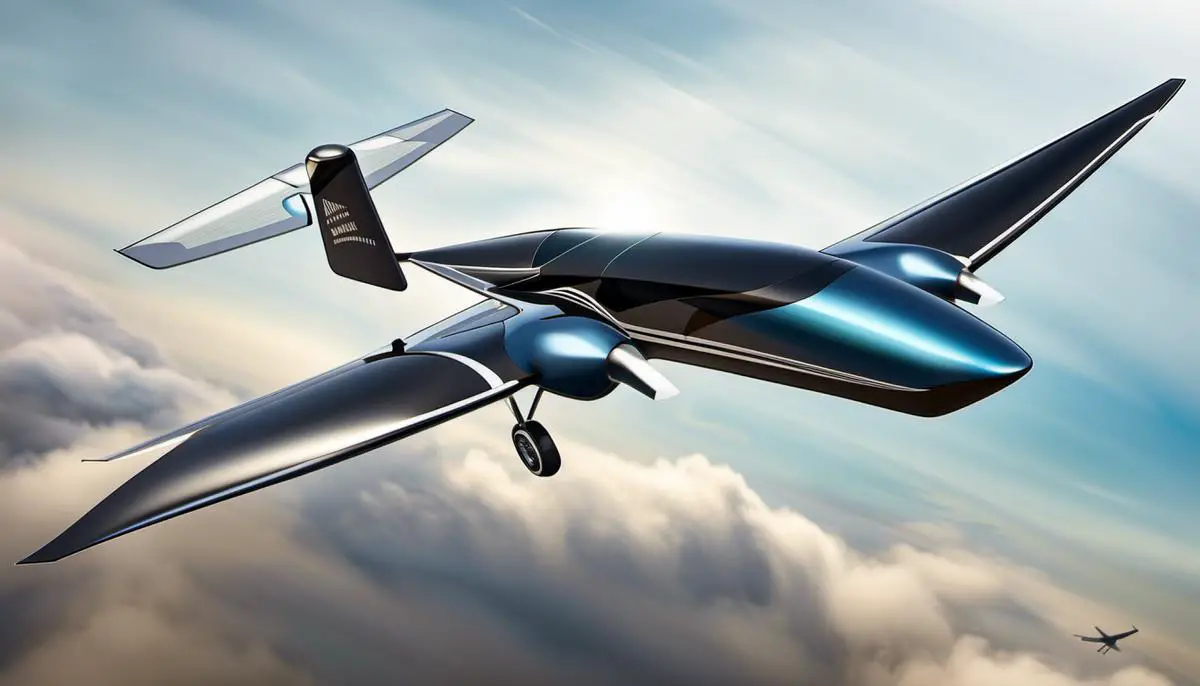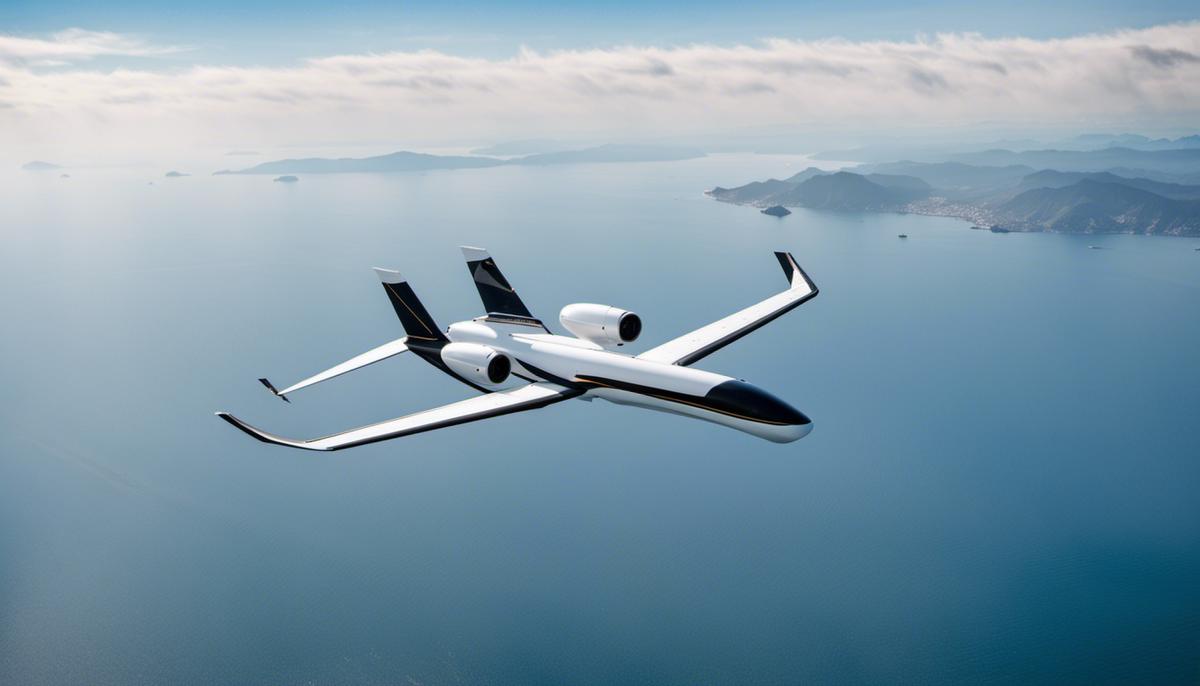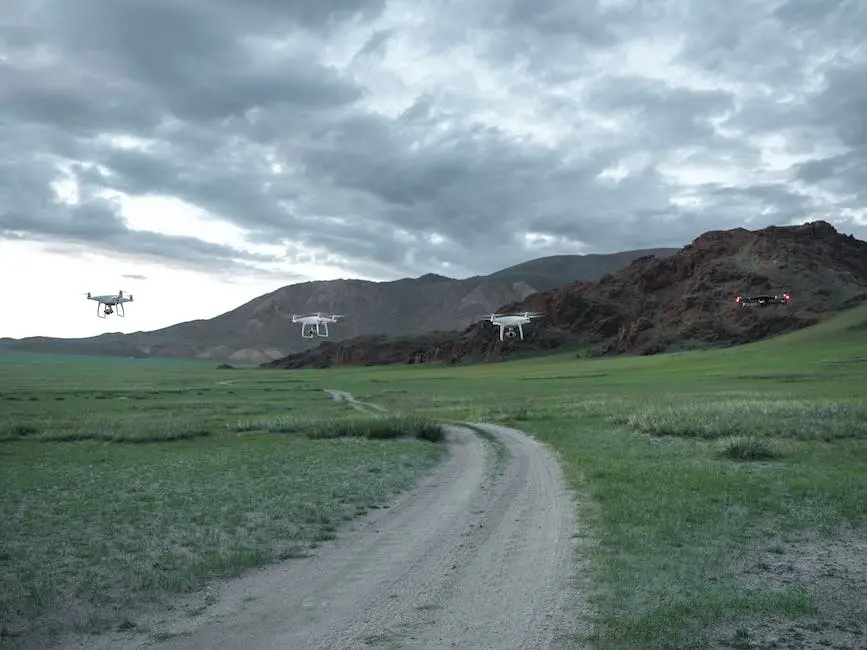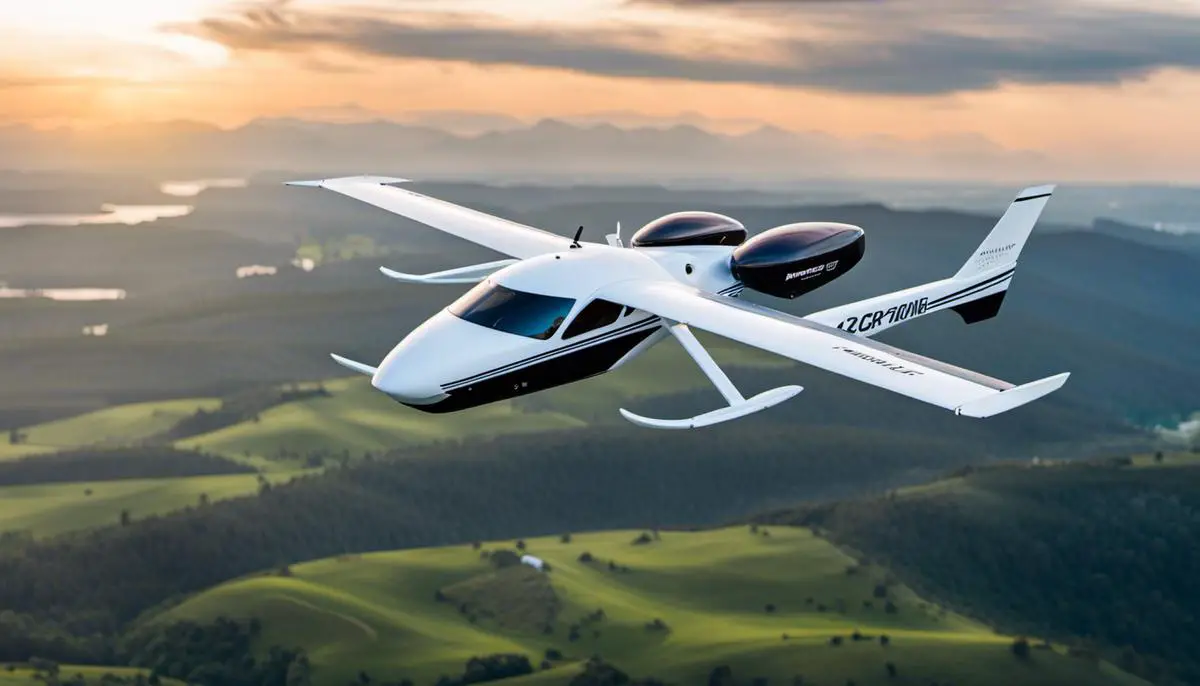Exploring the World of Fixed-Wing Drones

In the burgeoning world of unmanned aerial vehicles (UAVs), fixed-wing drones have emerged as a distinctive variant, unparalleled in their balance of energy efficiency, flight duration, and broad coverage capabilities. Unraveling traditional quadcopter designs, fixed-wing drones have carved a niche of their own. This discourse is aimed at introducing the intriguing world of fixed-wing drones, their operational dynamics, applications across various industries, and vital preflight legal and maintenance considerations to keep in mind.
Understanding Fixed-Wing Drones
Fixed-Wing Drones: An Overview
Fixed-wing drones, also known as unmanned aerial vehicles (UAVs) or unmanned aircraft systems (UAS), are aircrafts that have a rigid wing structure. Unlike rotary drones with multiple rotors, these drones maintain lift due to the fixed design of their wings, similar to conventional manned airplanes.
The key components of a typical fixed-wing drone include the fuselage (body), wings, tail, control surfaces like ailerons and elevators, propellers, and the onboard system. Majority of these drones are powered by electric motors or combustion engines. The onboard system usually comprises a flight controller, GPS module, autopilot software, battery or fuel source, and possibly a payload such as a camera or sensor for various uses.
Design and Functionality of Fixed-Wing Drones
Fixed-wing drones, in their functioning, operate similarly to traditional airplanes. While the wings provide lift, the power to thrust forward comes from their engine or motor. In most cases, these drones either launch themselves into the air or take off and land on a runway.
Unlike multi-rotor drones, whose flight is based on vertical lifting, fixed-wing drones rely on forward motion to create airflow over their wings, which subsequently creates lift. They are designed to glide once in the air, which is what makes their flight efficient and enables them to cover long distances.
Contrast to Other Types of Drones
A key difference between fixed-wing drones and other types, primarily quadcopters, is their flight operation. Quadcopters are easier to maneuver and can hover in place, making them suitable for tasks such as inspections and photographs. However, they have a significantly shorter flight time and coverage range compared to fixed-wing drones.
Fixed-wing drones offer more streamlined and efficient flight due to their aerodynamic design. They can cover hundreds of kilometers in a single flight and stay airborne for hours, making them ideal for long-range missions like mapping, surveying, or surveillance.
The Pros and Cons of Fixed-Wing Drones
Among the main advantages of fixed-wing drones are their impressive flight times and rapid speeds. Thanks to their unique aerodynamic design that allows for gliding, they use less energy than multi-rotor drones. This defines them as the optimal choice for extensive missions over vast areas.
Due to their fast speeds, they’re capable of covering immense distances more quickly. They have proven to be particularly beneficial for numerous tasks, including data collection over large areas, crop surveillance in agriculture, and even lifesaving search and rescue missions.
Still, fixed-wing drones aren’t without their challenges. They typically require either a runway or a launcher for takeoff, along with an expansive open area for landing. This is due to their landing mechanism, which greatly differs from that of multi-rotor drones. They lack the ability to hover in one place or navigate tight spaces with the same ease as multi-rotor drones. In addition, their operation usually demands a higher level of piloting knowledge and training, making them tougher for beginners. These drones also tend to be more expensive due to their superior onboard systems and larger structures.

Operational Dynamics of Fixed-Wing Drones
The Aerodynamic Principles of Fixed-Wing Drones
Fixed-wing drones are able to stay in flight by generating lift through their wings, a principle similar to that of traditional aircraft. This lift arises due to the airfoil design of the wings, where the difference in pressure on the upper and lower surfaces, caused by its forward motion, creates the essential lift. Their designs are typically streamlined, significantly reducing air resistance, which equips them to cover greater distances more efficiently compared to their multi-rotor counterparts.
Flight Controls and Power Systems
The flight of fixed-wing drones is controlled through a system of mechanical hinged sections, called control surfaces, that allows the pilot to adjust the drone’s pitch (up and down movement), roll, and yaw (left and right movement). The control surfaces include ailerons, elevators, and rudders. Onboard power systems, which typically consist of an internal combustion engine or an electric motor, power the drone’s movement. These are connected to a propeller that provides the necessary thrust for flight. The power system also supplies energy to the onboard systems, which include flight controls, communication, and navigation systems.
Stability Factors
Stability in fixed-wing drones is achieved through the combined effect of the center of gravity, aerodynamic forces, and control inputs. The placement of the wings, tail, and weight distribution influences the drone’s center of gravity, and plays a vital role in its stability. Fixed-wing drones have inherent stability due to their design and can return to a steady flight path after being disturbed, making them ideal for operations like farming, mapping, surveying, etc., where stable and prolonged flight is required.
Role of GPS Technology
GPS technology is fundamental to the operation of fixed-wing drones. It provides real-time information about the drone’s location, altitude, and velocity. This information is critical for planning and executing the flight path. GPS technology also enables many advanced features such as waypoint navigation, return-to-home functionality, and collision avoidance systems.
Understanding Flight Modes of Fixed-Wing Drones
There are different ways to pilot a fixed-wing drone, notably through manual or autonomous flight modes. Manual mode entails operation via a remote control, and it’s the choice for seasoned pilots or specialized drone applications such as racing and first-person-view (FPV) flights.
In contrast, an autonomous mode operates through a flight controller with pre-set instructions. Here, the drone’s course is pre-determined with waypoints and altitudes, enabling it to carry out intricate tasks like aerial mapping and precision agriculture with accuracy. Depending on the required tasks, both flight modes offer unique advantages and can be alternated as necessary.

Applications of Fixed-Wing Drones
The Role of Fixed-Wing Drones in Precision Agriculture
The agriculture industry has seen an influx of advanced tools, fixed-wing drones being one of them, fueling the adoption of precision farming. These types of drones, also termed Unmanned Aerial Vehicles (UAVs), come equipped with high-tech sensors and image capture capabilities. This allows them to collect valuable data over vast farming lands in just one flight. Consequently, farmers get to access insights about crop health, soil conditions, pest attacks, and irrigation infrastructure, which simplifies the decision-making process and promotes better yield while minimizing wastage.
For instance, the Parrot Disco-Pro AG Drone, a fixed-wing drone used in agriculture, comes with a multispectral sensor. This sensor captures specific wavelength bands, making it possible to analyze vegetation health. This data is used to create detailed NDVI maps that assist agronomists in maintaining and improving crop health.
Surveillance: Eyeballing from the Sky with Fixed-Wing Drones
Fixed-wing drones are also widely used in surveillance due to their long flight times and substantial coverage capabilities. In law enforcement, for instance, these drones support officers by providing aerial insights during investigations, or when monitoring high-crime zones. Fixed-wing drones, which can travel farther than their rotary counterparts, have also boosted complex tasks like border control surveillance.
A notable example is DJI’s Matrice 600 drone, which was used by California Law Enforcement in 2019 to help find a missing elderly person. With its thermal imaging capabilities, the drone was able to spot the missing individual in a dark and dense field.
Mapping and Surveying: Redefining Boundaries with Fixed-Wing Drones
Fixed-wing drones are playing a pivotal role in mapping and surveying. Engineers and surveyors increasingly rely on drones to create detailed and accurate topographical maps, conduct property surveys, and monitor construction progress. They can cover large areas quickly, reducing both the time and costs involved in traditional land survey methods.
A 2020 case study highlighted how Austrian drone company WingtraOne used fixed-wing drones to map a 215 square kilometer area in the Swiss Alps, producing high-resolution maps and 3D models for hydrological modeling and flood estimation.
Disaster Management: Advanced scouting with Fixed-Wing Drones
Fixed-wing drones are essential tools in disaster management. They provide an aerial view, helping rescuers fathom the magnitude of disasters like floods, wildfires, or earthquakes and streamline their recovery operations. By accessing hard-to-reach locations, these drones can hasten search and rescue missions, reducing risks for first responders.
Following the 2016 earthquake in Amatrice, Italy, fixed-wing drones were used to survey the damage and identify areas for immediate assistance. They provided visuals that helped in creating an effective reconstruction plan for the devastated region.
Implications and Possibilities with Fixed-Wing Drones
Fixed-wing drones have taken center stage in a variety of sectors, showcasing their diverse uses. These drones offer numerous practical applications, from improving agricultural production by providing precision measurements, to assisting in disaster response and recovery. Their versatile applications clearly indicate fixed-wing drones as an invaluable tool in a broad range of industries.

Legal and Safety Consideration of Flying Fixed-Wing Drones
Regulatory Considerations in Operating Fixed-Wing Drones
As fixed-wing drones rise in popularity, especially given their longer flight duration, extensive range, and advanced capabilities, it’s also important to understand the legal aspects of their operation. Globally, there are various laws and rules governing the use of these drones, and each country’s aviation authorities typically set them. For example, in the United States, the Federal Aviation Administration (FAA) requires drone operators to hold a Remote Pilot Certificate if they intend to use drones for commercial purposes. Additionally, the FAA insists that all drones that weigh above 0.55 pounds (roughly 250 grams) need to be registered, irrespective of whether their usage is commercial or recreational.
Drone Insurance
Considering the potential risks involved in flying fixed-wing drones, such as property damage or personal injuries, it’s recommended to procure drone insurance. Drone insurance primarily falls into two categories, namely liability insurance and hull insurance. Liability insurance covers damage or injuries to third parties, whereas hull insurance covers damage to the drone itself. The specific insurance policy will depend on various factors, including the drone’s price, its intended use, and the pilot’s level of experience.
FAA Guidelines for Flying Drones
The FAA has clear guidelines for drone operations, ensuring safety for both the drone operator and the general public. These guidelines include the requirement to always keep the drone within the visual line of sight, not operate it over people or from a moving vehicle, not interfere with manned aircraft, and limit the operational altitude to 400 feet. Additionally, drones shouldn’t be flown at night without appropriate lighting and, unless in a sparsely populated area, can’t exceed a speed of 100 mph.
Flight Permissions
Beyond general guidelines, certain operations require specific flight permissions from the FAA. These could include flying drones over populated areas, at night, beyond the visual line of sight, or in controlled airspace. To operate in these conditions, drone pilots must secure a waiver from the FAA, demonstrating that they can operate the drone safely under the specified circumstances. Notably, the FAA has also facilitated a simplified approval process called LAANC (Low Altitude Authorization and Notification Capability) for drone pilots to request to fly in controlled airspace.
Safety Rules and Practices
Even with permissions and legal requirements satisfied, safe and responsible practices are crucial when operating drones. Pilots should conduct a pre-flight check to assure the drone is in good working condition. A proper understanding of the drone’s controls and operational limits can also prevent accidents. Finally, being aware of and respectful of the privacy rights of others, and understanding local, state, and national laws are all essential parts of being a responsible drone operator.
Embracing Drone Technology Responsibly
As the use of drone technology becomes increasingly prevalent in our daily lives, understanding and adhering to the legal and safety parameters is of utmost importance. This not only ensures secure flight operations but also helps to elevate the broader comprehension and perception of drone usage amongst the public, fostering a progressive integration of this revolutionary technology.

Choosing and Maintaining Your Fixed-Wing Drone
Selecting a Suitable Fixed-Wing Drone
In the market for a fixed-wing drone? It’s essential to familiarize yourself with their particular functionalities before you make a purchase. Fixed-wing drones overshadow their multi-rotor counterparts in flight duration, often exceeding an hour of flight time, making them suitable for long-distance projects and sturdiness.
The drone’s payload capacity is another critical aspect to consider, depending on your intended operations. Whether you require equipment such as high-definition cameras or sensors, ensure the drone can accommodate the necessary weight.
Seek out fixed-wing drones fitted with VTOL (vertical take-off and landing) capabilities if you anticipate operating in difficult launching or landing environments. This feature eliminates the need for a runway, adding flexibility to your operations.
Comparing Different Models
Once you’re clear about the kind of fixed-wing drone you want, begin comparing different models. While doing so, consider the durability and construction materials. A strong build that can withstand winds and occasional crashes can be beneficial for those new to this hobby or profession.
The drone’s endurance, cruise speed, and range are other factors to consider. Endurance refers to how long the drone can stay in the air without needing a battery change. A drone’s cruise speed affects how fast it can get to its destination, while its range determines how far away it can fly from the controller.
Purchasing Fixed-Wing Drones
There are several places to buy fixed-wing drones, ranging from online marketplaces like Amazon and eBay to specialised drone retailers. Always check user reviews and ratings before purchasing from an online marketplace.
Specialised drone retailers often provide additional services, such as drone repair, maintenance, and drone flying lessons. They can also offer expert advice on the model that best suits your needs.
Maintaining Your Fixed-Wing Drone
Maintenance plays a crucial role in extending the operational life of your drone. Regular check-ups and cleaning after every flight can help prevent potential issues. Checking the propellers for any damage and ensuring the batteries are correctly charged before each flight can also contribute to a longer drone life.
Keep the drone’s software updated, which will keep it optimized with the latest features and security enhancements. If you’re using the drone in challenging weather conditions, it’s essential to ensure moisture or dirt does not impact the drone’s internal components.
Finally, understand and follow the regulations set by the Federal Aviation Administration (FAA).
This includes registering your drone if it weighs more than 0.55 pounds, avoiding restricted airspace, and never flying above 400 feet. Doing so will not only ensure the longevity of your drone but also keep you on the right side of the law.

Whether used for mapping vast agricultural lands, conducting precise scientific research, or ensuring safety through surveillance, fixed-wing drones are continually proving their worth. They stand as testimony to human ingenuity, blending technology and aerodynamics into a powerful tool. However, their effective and responsible usage requires proper understanding and respect for legal and safety frameworks in place. Also, opting for a drone that suits one’s needs while adhering to maintenance practices will bring about lasting benefits. Simply put, harnessing the full potential of fixed-wing drones requires a solid grasp of their nature and nuances. May your journey in mastering them be an enriching one.








